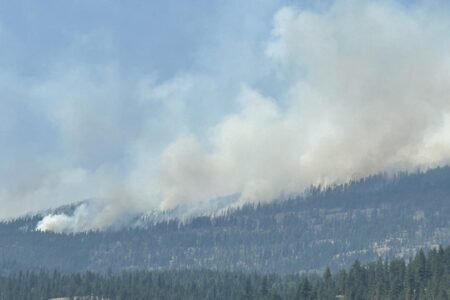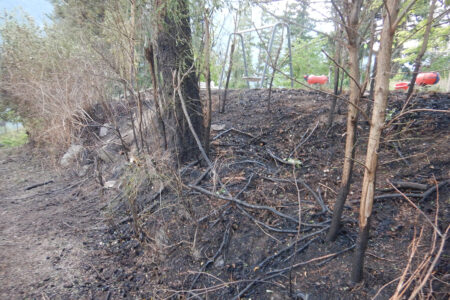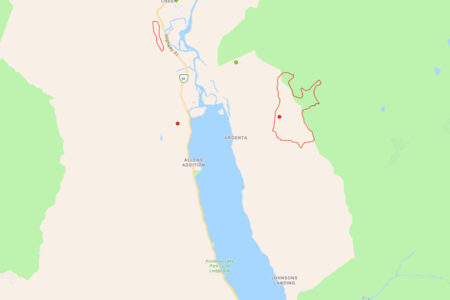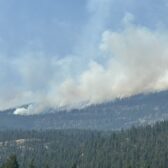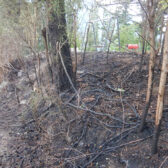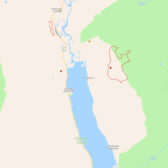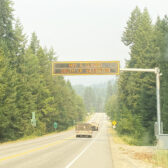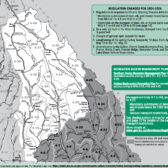River Talk: Flooding and the Columbia River Treaty — Then and Now
Eileen Delehanty Pearkes has been researching and writing about the history and politics of water in the upper Columbia Basin since 2005.
Her book on the Columbia River Treaty, A River Captured, was released in 2016. Recently, her travelling exhibit on the Columbia River Treaty, curated for Touchstones Nelson, won a national award from the Canadian Museum Association.
Pearkes has agreed to help readers understand the importance of the Columbia River Treaty to the region with another edition of River Talk.
Today Pearkes writes about 1948 Flood that saw catastrophic damage in the Columbia Basin.
The end of May marks the 70th anniversary of the 1948 Flood, an event that changed the course of history. That year, the annual spring flood waters rose to levels not seen since 1894. Throughout the international Columbia Basin, 5000 homes were destroyed and over 50,000 people evacuated.
The Columbia and its main tributaries (the Kootenay, Pend d’Oreille and Snake) are ‘snow-charged’ systems. Each spring, high mountain melt finds its way to the sea along these rivers. Weather provides a wide variability in the spring melt. How much snow combines with the timing and length of spring heat waves to make every year different. Throw in some heavy rain on the heels of hot weather and a ‘big water year’ is born.
The situation in Grand Forks, the Boundary and the Okanagan regions these past few weeks predicts the possibility of another Big Water Year. We’ve had above normal snowfall in 2017-18, some of it accumulating higher up right into mid-April. And, the weather has warmed up suddenly. There’s a lot of snow still to melt, and we may have more than one peak in the process.
The water dynamics of the Columbia Basin have changed a lot since 1948, largely as a result of dams constructed for flood control. Today, dams offer 37 million acre-feet of flood control storage, with over half of it in Canada (20.5 million), in the East and West Kootenay regions. Canadian flood control storage was a big part of the Columbia River Treaty, and the 1948 Flood had a big influence on the timing and design of today’s dense network of dams. The U.S. paid Canada for 60 years of flood control. That deal will expire in 2024. Both countries are officially ready to begin the formal negotiation process.
I was in Wenatchee, Washington last week, speaking about the Columbia River Treaty. My talk was one of several I have given this spring in the United States, sharing the history of many damaging impacts here as a result of the treaty. Many Americans are unaware of the permanent floods we endure in the upper watershed, largely in order to keep seasonal flood waters from damaging Portland and other cities.
B.C. Hydro likes to suggest that these same dams control flooding in our region, too, but in reality, mega-projects were not required to keep us on dry land. And in fact, the floods in the Okanagan and Boundary country are from tributaries that the big dams can’t even control. But these recent floods hint at what can still happen in other parts of the basin. Nature can still deal us a wild card.
In Wenatchee, I was on a panel that included Steve Wright, a business executive who leads a group of power producers and dam operators on the mid-Columbia River in Washington State, and John Sirois, a tribal fisheries leader who spoke about the possibility of re-introducing salmon above Grand Coulee dam. In some ways, we three represented the main issues that come up during informal discussions about the treaty: how can we balance the desire to produce affordable electricity with efforts to restore ecosystem health to a damaged river, with the mistakes of the past that caused so many British Columbians in our region to suffer more than their share of the treaty impacts.
The mid-Columbia power producers want to reduce the Canadian Entitlement (CE) from 50% down to 10%, using the logic that the CE was meant to finance the construction of three dams (Mica, Keenleyside, Duncan). I have a different view of history. The Entitlement is a principle of fairness and equal sharing by both countries. This region has suffered enough. I would like to see some of the CE under a new treaty directly benefit us, not go into provincial coffers.
This year’s weather patterns serve as a reminder of one more factor in negotiations.
How much will post-2024 flood control be worth to the U.S.?
Are there ways we can restore or re-create flood plain that could take some of the overflow in Big Water years in ways that would benefit ecosystem restoration?
What are the trade-offs?
What are our values?




